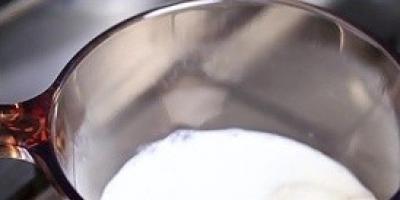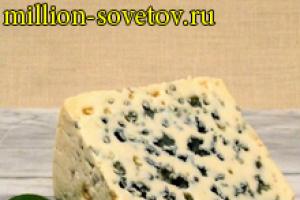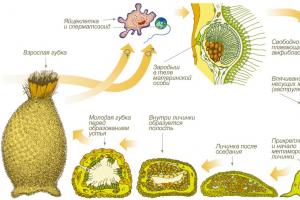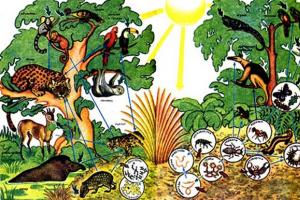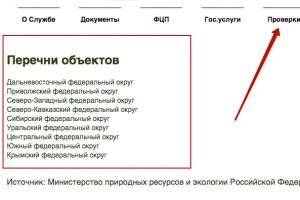Azimina (lat. Asimina), or pow-pow- a genus of flowering plants in the Annonaceae family, which includes 8 species, mostly distributed in nature in the United States. Pawpaw is also called the banana tree or American papaya (paw paw), since the fruits of all three plants have some similarities. For the sake of these edible fruits, the species of pawpaw triloba, or pawpaw triloba, is grown in gardens. Asimina triloba), introduced into culture in 1736. It is grown in regions with warm climates, for example, in Italy, France, Japan and Spain. Pawpaw also grows in Ukraine, mainly in its southern regions. Azimina in Russia is found mostly in the Krasnodar and Stavropol regions, although there are known cases of its successful fruiting in Orenburg. In addition to the recognized taste qualities, the medicinal properties of pawpaw are also of interest.
Planting and caring for pawpaw (in brief)
- Landing: in early spring.
- Bloom: in April for three weeks.
- Lighting: bright sunlight.
- The soil: loose, moisture- and breathable, slightly acidic reaction.
- Watering: in season active growth– regular and plentiful, stop watering in the fall.
- Feeding: from the second year of life in the spring, with complex mineral or organic fertilizer in liquid form.
- Reproduction: seeds, root shoots, grafting and parts of rhizomes.
- Diseases: root rot.
- Pests: almost not affected.
- Properties: the plant has healing properties.
Read more about growing pawpaw below.
Azimina - description
Pawpaw triloba is a deciduous tree, 5 to 8 m high, with smooth gray-brown bark and an evenly leafy, wide-pyramidal crown. Young shoots of the plant are covered with pubescence. Oblong-ovate, tapering to a short, thick petiole and pointed towards the apex, light green leathery leaves can reach a length of 22-25 and a width of 7-12 cm. The underside of the young leaves of the plant is covered with pubescence, and the top is glossy. Along with the leaves, in their axils, attractive bell-shaped brownish-purple flowers open on the shoots of last year in April or May.
Pawpaw fruits - juicy cylindrical berries with curled ends - ripen in early to mid-autumn. They are collected in fruit clusters of 2-9 berries, reach a length of 7-9, a width of 4-5 cm, and can weigh from 60 to 200 g. The fruits, painted in a dark shade of green, lighten to a pale yellow hue as they ripen. and then turn brown. Pawpaw berries are covered with a thin shell, inside of which there is a delicate light yellow, orange or creamy pulp with a very sweet taste, reminiscent of both mango and banana, and emitting a strawberry-pineapple aroma. Inside the pulp, arranged in two rows, ripen 10-12 dark brown seeds, flattened on the sides, reaching a length of 2.5 cm.
Planting pawpaws in the ground
Pawpaw requires at least 160 frost-free days to ripen its fruit. For the first two years, young trees need to be shaded from strong sun. but with age, plants develop a need for bright light, and they grow and bear fruit well in direct rays.
The composition of the soil for pawpaw does not play a big role, but it is desirable that it be slightly acidic, loose, moisture- and breathable. Of course, the pawpaw tolerates heavy soil, but in this case, when planting, it is advisable to lay a thick layer of drainage material in the hole.
Best accepted and further developed two-year-old seedlings pawpaws, which, when planted, are placed at a distance of at least 3 meters from each other, maintaining row spacing of 5 m wide. Planting pit should reach 60-70 cm in diameter and be 50-60 cm deep.
To the soil mixture with which you will fill the pit, you need to add 5-10 kg of humus or compost, a little wood ash, sand and mix everything thoroughly. Place at the bottom of the pit drainage layer of broken bricks or gravel 15-20 cm thick and pour a heap of soil mixture on it.
Having placed the seedling in the center of the hole on a mound of nutrient soil, straighten its roots and fill the remaining space with the same soil, lightly compact the surface around the seedling and water it generously. When the water is absorbed, the root circle needs to be mulched humus, peat or bark.
Caring for pawpaw in the garden
At the beginning of spring, before the growing season begins, paw paws are pruned, during which broken, frostbitten, diseased or improperly growing shoots are removed and the crown is shaped. Pawpaw blooms from April for three weeks.
During the season of active growth, pawpaw needs regular and abundant watering, but you need to make sure that it is not excessive, otherwise the roots of the plant will begin to rot. In autumn, when the dormant period begins, watering is stopped. After watering the soil in tree trunk circle loosen, while simultaneously clearing the root area of weeds. Water for irrigation is used that has been settled and heated in the sun.
 In the photo: Pawpaw flower
In the photo: Pawpaw flower
Azimina in open ground requires feeding only from the second year of life: For the first season, the organic matter that was added to the soil during planting is enough for her. In April, that is, at the beginning of the second season, a solution of a mineral complex with high content phosphorus and nitrogen. If you prefer to fertilize the soil in the garden organic fertilizers, then pond or manure is most suitable for pawpaw.
The yield of pawpaw can be increased by artificial cross-pollination between genetically heterogeneous plant varieties. To do this, at least two trees must grow on the site, and then you can use a brush to transfer pollen from the flowers of one tree to the flowers of another. This technique allows you to at least double the fruit yield.
Since flies play an active role in pollination of pawpaws, it is advisable to hang pieces of rotting meat in the garden at different heights during flowering.
Three-lobed pawpaw is cold-resistant and can withstand frosts down to -29˚C, so growing pawpaw in open ground does not require protective measures before the onset of winter. The plant's flower buds, which appear in mid-spring, are covered with a dense shell that protects them from frost.
Reproduction of pawpaws
Pawpaw reproduces generatively - by seeds, and vegetatively - by parts of the rhizome, basal shoots and grafting.
 In the photo: Pawpaw fruits on a tree
In the photo: Pawpaw fruits on a tree
Pawpaw seeds before sowing, it is necessary to undergo stratification at a temperature of 0-4 ˚C for 3-4 months, and only after that 1-2 seeds are sown to a depth of 2-3 cm in peat pots with seedling soil: seedlings have a very sensitive root system, therefore preferably her once again Do not disturb by picking or transplanting. Contain crops at a temperature of 18-22 ˚C.
If you decide to sow pawpaw directly into the ground, then do this before winter, in October, and in this case there is no need to engage in preliminary stratification: the seed will be hardened in the soil. Seeds sown in pots can germinate in as little as 7 weeks, while winter garden crops will sprout only next spring. In the first year, seedlings grow up to 10-15 cm. Pawpaw from seeds will begin to bear fruit only after 5-6 years.
A piece of rhizome for propagation of pawpaw can be broken off from the base of the tree. It is planted in the hole, sprinkled with a nutrient substrate, and in a little over a month you can already expect the first shoots to appear. In the same way, you can plant root shoots if your pawpaw forms them.
 In the photo: How pawpaw blooms
In the photo: How pawpaw blooms
Vaccination of pawpaws carried out using the “split” method, using lignified cuttings as a scion. The rootstock is split to a depth of 1-1.5 cm, and a pointed cut of the scion is placed in the gap so that the cambial layers of both parts coincide. The grafting site is wrapped with film to protect it from moisture. You should know that Grafting is the only method that preserves the varietal characteristics of pawpaw.
Pests and diseases of pawpaw
Pawpaw, which is resistant to diseases and pests, can be affected by root rot as a result of excessive watering, causing the growth and development of the plant to slow down and the leaves to turn brown. Therefore, it is very important that pawpaw hydration is balanced. The pawpaw is extremely rarely affected by viral and bacterial infections, as well as harmful insects.
Pawpaw collection and storage
At the end of summer or early autumn, pawpaw fruits stop increasing in size and begin to ripen. Ripe fruits emit a strong aroma, become soft, and their green skin turns yellow. If you are going to store the pawpaw fruits for a while, you will need to remove them a week before they ripen, before they fall off on their own.
Pawpaw fruits cannot withstand long-term storage: vegetable drawer refrigerator, they can be stored for up to three weeks, and in room conditions- only 3-4 days, so most often they are frozen or processed: jam and compotes are made from them.
Pawpaw fruits also do not tolerate transportation well, so they need to be transported in an unripe form, trying to protect them from mechanical damage. The fruits will be stored better and longer if each one is wrapped in paper.
Types and varieties of pawpaws
There are eight species of pawpaw in nature, one of them is a natural hybrid. Only pawpaw triloba, or three-lobed pawpaw, is cultivated, but thanks to the tireless work of breeders, today there are over 70 cultivars of this plant. The most famous of them are:
- Davis– a plant with high quality aromatic fruits with yellow sweet pulp;
- Martin– a variety characterized by cold resistance and high quality fruits;
- Overlease– pawpaw, the fruits of which are similar in quality to the Davis variety;
- Victoria– a variety with fruits weighing up to 380 g with sweet and aromatic yellow pulp.
Such varieties of pawpaw triloba as Autumn Surprise, Dessertnaya, Strickler, Sunflower, Prima, Balda, Zimmerman, Potomac, Taylor and others are also in demand among gardeners.
Properties of pawpaw - harm and benefit
Useful properties of pawpaw
Pawpaw fruits, also called Mexican bananas, contain vitamins C and A, which have antioxidant and rejuvenating properties, so the pulp of the fruit is used not only for food, but also for preparing facial masks. In addition to vitamins, fruits contain mineral salts of calcium, magnesium, iron, phosphorus and potassium, amino acids, sugars, fats, pectin and fiber. Pawpaw has a unique antimicrobial and antitumor effect: acetogenin contained in the fruit helps prevent the development of certain types of cancer cells and stop the growth of already formed tumors. Pawpaw extract has a strengthening effect on the immune system, increasing its protective function, protecting body cells from free radicals and negative influence stressful situations.
The Annonaceae family includes more than 2000 plant species. Many of them are economically valuable - they give delicious fruits or aroma oils. All annonaceae grow in the tropics, as they absolutely cannot tolerate frost. The only exception is the Azimin family. Some of its representatives can go beyond the tropics. But at the same time they are still heat-loving.
The only plant of the Anna family that can tolerate frosts down to -30 o C is the pawpaw three-lobed. This species is distributed throughout the United States, right up to the borders with Canada. It is precisely this pawpaw that arouses increased interest among Russian gardeners.
External signs of the plant
Pawpaw three-lobed is a very neat tree with a pyramidal crown. In the wild, this representative of the Annonaceae family can grow up to 15 m. However, when cultivated in the garden, the trunk length of the three-lobed pawpaw usually does not exceed 5-10 m. Distinctive features of this plant, in addition to the crown correct form, are beautiful smooth bark and fairly large leaves.
Bloom
Pawpaw flowers are also large - about 6 cm in diameter. The six petals of the corolla have a very unusual reddish-brown hue. Moreover, the flower has several pistils. Subsequently, each of them, in case of successful pollination, turns into an ovary, and then into a fruit. The smell of pawpaw flowers is weak, but very unpleasant. In the wild, these are mainly carrion flies. The fact is that the flowers of this smell of rotten meat.

The three-lobed pawpaw (American pawpaw is another name for it), despite the spectacular appearance of the crown, is grown by summer residents, of course, not as an ornamental plant. Its value lies primarily in its tasty and healthy fruits. You can eat them both fresh and canned.
Description of fruits
Three-lobed pawpaw blooms in the spring for at least three weeks. After this, the corolla petals fall off and fruits begin to set. The length of the latter is about 10 cm, diameter - 5 cm. Up to 9 fruits can grow from each flower. Their skin is very thin, and the pulp has a consistency similar to soft butter. The color of unripe pawpaw fruits is green. After some time it turns yellowish. The ripe fruits of this plant are dark brown in color. They are stored very poorly. Therefore, they are either eaten immediately fresh, or immediately on the day of collection they are used to make jams, jams, compotes, etc. You can also pick yellow-green fruits from the tree and store them until ripening. But in this case they will not be too juicy.
Actually, oh taste qualities The pawpaw fruits are spoken of with admiration by absolutely everyone who has ever tried them. The reason for this is mainly the high sugar content. Americans believe that pawpaw fruit tastes like custard. They also smell very pleasant.

Biological features
In our country, the three-lobed pawpaw, despite the fact that this plant can withstand very low temperatures, is grown mainly only in the Stavropol and Krasnodar territories, as well as in the south of the Rostov region. In these regions, summer residents often do not even cover it for the winter. Several high-yielding varieties of three-lobed pawpaw have been bred in the Sochi region.
Sometimes this unconventional for Russia fruit crop can be seen in gardens and in colder regions of the country. For example, sometimes the three-lobed pawpaw is even grown in the Moscow region. However, in cold areas this crop, of course, requires careful shelter for the winter. After all, the air temperature in winter sometimes drops below -30 degrees. This fruit crop is planted in pairs. Despite the fact that each pawpaw flower has both pistils and stamens, it is cross-pollinated.
Banana tree fruits ripen unevenly. At the same time, mature ones hold on to the branches very poorly and quickly fall off. They begin to rot the very next day. After all, the very tender and juicy pulp of the fruit is one of the distinctive features of such a plant as pawpaw three-lobed. The seeds of this plant are very large (like those of a watermelon). They are located in two rows. Pawpaw fruits ripen 5-8 years after planting. The grafted crop can be harvested in the second year.

The value of pawpaw fruits
The properties of the fruits of this plant are truly unique. In the homeland of pawpaws, in America, peasants treat poisoning with them. Residents of the tropics are confident that after just a month of eating the fruits of this plant, the intestines are completely cleansed of all the toxins accumulated in it. And this, in turn, has a very beneficial effect on overall well-being.
In addition, pawpaw fruits have antimicrobial and even antitumor effect. In the United States, they are often used to prevent and even treat cancer. According to the results of research conducted by scientists, pawpaw juice and pulp inhibit the growth of tumors even better than many medications.
The seeds of this plant can also be used as an emetic. Many American women also make anti-aging face masks from the pulp of pawpaw fruits. It is believed that they are more effective than even many expensive chemical cosmetics.

Features of reproduction
In the wild, the three-lobed pawpaw can be found mainly on fertile soils along the banks of water bodies. It forms very dense thickets, as it produces a lot of shoots. In gardens and vegetable gardens, it is propagated only by seeds and root suckers. Gardeners advise planting varietal pawpaw on wild plants using the “split” method.
The root system of this plant is very sensitive. Therefore, it is highly not recommended to transfer pawpaw seedlings to another place. The same applies to seedlings.

Features of cultivation
The three-lobed pawpaw is completely undemanding in terms of soil composition. It can be planted even on heavy clay soils. But this plant loves the sun very much. It is necessary to shade seedlings only in the first two years of cultivation.
Three-lobed pawpaw should be watered frequently. The soil under this tree should be constantly moist. However, water stagnation should not be allowed. Pawpaw is fed with both organic and mineral fertilizers. Manure, ash or urea are excellent for this purpose. It is useful to prune mature plants for replacement, since pawpaw fruits are formed on last year's shoots. Of course, in the spring you need to remove all diseased, improperly growing and frozen branches. For the winter, it is advisable to cover the pawpaw with spunbond.
In nature there are a lot of different types of tasty and healthy fruit plants. But very little is known about many. For example, in the Annonaceae family there are many species that bear tasty fruits. They all love warmth and grow mainly in tropical forests. The exception is the three-lobed pawpaw. This plant has the appearance of a tree and can tolerate air temperatures down to -30 degrees. Therefore, this crop is widespread in gardens with climatic conditions far from subtropics; the main thing is to observe certain growing conditions in order to achieve high yields. But it is grown not only as fruit tree, it is widely used in medicine.
Botanical characteristics
The fruit plant pawpaw three-lobed is distributed along the banks of subtropical rivers North America. Trees can be seen even in Canada. In the wild, it grows in the form of shrubs, up to 10-15 m in height, since this plant produces many shoots. They do not bear fruit, but using the cutting method, it is convenient to grow such trees under cultural conditions. Pawpaw among gardeners was called a banana tree due to the similarity of the fruits in shape and appearance for bananas.
The bark is smooth, olive-brown, which over the years acquires a gray tint and becomes covered with pimples, reminiscent of warts. The leaves of the plant are dark green, large, regular oval in shape, from 10 to 30 cm in length, and reach 12 cm in width. In autumn they turn light yellow and fall out.
From the end of April, beginning of May, shaggy red-brown flowers appear, three-lobed, large in size, and shaped like bells. They reach 5-6 cm in diameter and contain up to 9 pistils. This makes it possible to obtain several fruits from one flower, which has a light but bad smell. It is cross-pollinated by bees, flies and other insects.
Pawpaw fruits ripen no earlier than the end of September. The light yellow skin peels off easily. The creamy pulp is very sweet, pasty, and its taste characteristics are reminiscent of a banana mixture with the smell of strawberries.
Fruits cannot be stored for a long time and therefore, after harvesting, they are made into jams, preserves or eaten immediately. They contain a large number of vitamins A and C, which help strengthen the immune system. They contain high level sucrose, so these will be an excellent snack for people watching their figure, calorie content 100g. pulp is 150kcal. For those who like to cleanse the body " banana tree"will be an excellent helper; for this it is enough to eat one fruit a day.
Types of pawpaws
In the gardens of North and South America, France, Italy and other countries, from 10 to 60 species of pawpaw are common, which differ in their botanical characteristics. The most common types are:
- Pawpaw dwarf
- Azimina inkana
- Sochinskaya 11
- Pawpaw triloba
The main work on growing new varieties is carried out in the USA.
The dwarf pawpaw is a shrub, just over a meter high, with standard, ovate leaves. This shrub blooms with delicate purple flowers about two cm in diameter. It will become a decoration in the garden, as well as in tubs indoors. This shrub is used as an ornamental plant or for medicinal purposes.
Pawpaw inkana is also a shrub. Distinctive feature This species has oblong leaves, pointed at the end. This early variety, which blooms in March and bears fruit in August. It grows well indoors. He doesn't like straight lines sun rays.
The Sochi 11 species, which was bred by Russian breeders, is very common. This variety is early ripening, bears large fruits with bright yellow, tasty pulp, up to 350 g. every.
In the territory Russian Federation most common frost-resistant varieties: pawpaw triloba or triloba. It is presented in the form big trees with a pyramidal crown approximately 10 - 12 m in height. Large bright ovoid leaves and large dark burgundy flowers compete ornamental plants. Flower petals in the amount of 6 pieces look like blades, which is why pawpaw triloba is called three-lobed.
Useful properties of pawpaw
Pawpaw three-lobed received the name “banana tree” not only because of the banana taste of the fruits, but in their composition both of these fruits are very similar. They are rich in pectin, vitamins and microelements (potassium, magnesium, iron, calcium). Beneficial features pawpaws are numerous. An emetic is made from the seeds to cleanse the body of toxins; decoctions of the leaves are used as a diuretic.
The pulp from the fruit is applied to the skin for rejuvenation, and when eaten it acts as an antitumor agent. Scientists have discovered that some substances in this tree fight even cancer cells that are not destroyed by chemotherapy. Eating these fruits strengthens general state immunity.
Planting and care
Growing pawpaw does not require much effort, as this plant thrives in both tropical forests and temperate climates. Planting banana trees is becoming increasingly popular. middle lane Russia. Due to the fact that the buds are covered with a thin protective film, they can withstand very low temperatures, and sufficient daylight in the Moscow region makes it possible for the fruits to ripen.
Perhaps the main condition for growing is a sufficient amount of light, although one biennial plants should be protected from bright sunlight. There is an unusual method of planting trees. It is placed in a tube about 20–30 cm high to protect it from light. If a plant emerges from it, then it will continue to grow. The three-lobed pawpaw is afraid of strong winds and does not like stagnant moisture. Therefore, you should water it little by little and often.
Before planting in open ground, the soil must be prepared. Light soil enriched with fertilizers is preferred. It is advisable to mix the soil with drainage. This will reduce the load on the weak root system and prevent water from stagnating.
In the first years of the tree's life, fertilizing is not needed. The plant should be watered 2 times a week, but the soil should always be moist.
Despite the rather cold winters of the Moscow region, the Nebraska banana should not be covered. In winter, fertilizing can be done approximately once a month, and during the growing and fruiting season, once a week. At the beginning of spring, pruning is done to form the crown. The branches are tied up, as they often break due to the weight of the fruit.
Pawpaw propagation by seeds
It was previously mentioned that the banana tree sends out many shoots, so it is easy to propagate by cuttings. But growing at home is possible with seeds.
Brown seeds measuring 2 cm or more are located in two rows in the fruit and look slightly flattened. For good germination of banana seeds, a temperature of 0 to 4 degrees is created. They can be mixed with peat or sand, placed in a regular plastic bag. They are stored like this for up to 4 months. After this, they are planted in pots to a depth of 30–50 cm. The seeds germinate in 2–2.5 months. The replanting process must be done carefully, because the root system is very weak and the sprouts can be easily damaged.
Planting pawpaws
To grow on personal plot banana tree there are some factors to consider:
- the plant should be planted behind the house to shelter it from the wind; exclude the north side when planting;
- planting time - spring;
- must be planted immediately in a permanent place;
- sprinkle on the bottom of the dug hole wood ash or expanded clay, then add sand;
- mix the soil with organic fertilizer;
Planting and growing pawpaws in open ground, for example in the Krasnodar Territory, Crimea, and the Caucasus, will not bring much trouble; it will bring good harvest, since there are more than 150 - 160 frost-free days. This will allow the Paw Paw tree to go through its entire life cycle.
Pawpaw grafting
A common method of propagating shrubs and trees is grafting. This is a vegetative method of propagation by combining different parts plants.
Pawpaw grafting occurs in the spring, in April:
- It is necessary to cut off part of the cutting with a bud;
- Wedge the rootstock 9lower part of the plant lengthwise into 2 parts;
- Scion 9 (upper part of the plant with a bud) make pointed;
- Connect both parts and wrap well.
- Wrap the graft with cling film to protect it from moisture.
- After 2 weeks, new buds should appear. This means that the vaccine has taken root.
- After 3 - 4 weeks, you can remove the wrapping and enjoy the new tree.
Pawpaw care
When growing a Nebraska tree, you should follow the rules for caring for it.
- In the spring-summer period, frequent watering is required, and a gradual reduction in watering from August.
- In the autumn-winter period it is necessary to water once every 30 days.
- Azimina is not afraid of pests, but due to excessive watering, the root system may begin to rot.
- Watering should be moderate.
- After 3-4 days, light loosening of the soil is carried out.
- Feeding is carried out starting from two to three years of age of the plant.
- Organic fertilizers should consist of manure mixed with ash.
- They contribute mineral fertilizers with a high content of phosphorus and nitrogen.
- In spring and summer, fertilizing is carried out every week. And in winter only once a month.
The pawpaw tree begins to bear fruit only in the 6th – 7th year of cultivation. Therefore, gardeners must be patient and follow a few tips in order to grow juicy and tasty banana-like fruits.
Pawpaw or banana tree, another exotic for your garden. It came to us from the USA, where this tree grows throughout the country. The banana tree got its name due to the shape of its fruits, which are similar to a banana. It was brought to us in the last century, but did not gain popularity, unlike today, when Azimina is gaining its popularity quite quickly and winning the love of our gardeners.
Pawpaw is a shrub or tree. The plant has a fairly average height of approximately 2-3 meters. The fruits are elongated and green. The leaves are large, reaching 30 cm in length. The flowers of the banana tree resemble bells. A distinctive feature of this plant is that up to 12 fruits can grow from just one flower. The fruits are fragrant and sweet, somewhat reminiscent of a banana. Pawpaw flowers are very beautiful and large, purple-red in color.. After flowering, the plant looks no less beautiful, due to the beautiful large foliage, which looks impressive even in autumn period, acquiring a rich yellow color.
In the wild they grow near rivers and ponds, which indicates the plant’s love for moist soils.
Most suitable variety for growing in the regions of Russia and Ukraine - this is Azimina three-palmata.
Planting Pawpaw (Banana tree)
Pawpaw can be grown either as a seedling or from a seed. Of course, simpler, more convenient and reliable method This is planting with a seedling, but you can work hard and grow it from seeds if you want to grow the seedling yourself.
Let's start with planting from seeds. This process is very complex and troublesome. You can grow seeds only while they have not yet lost their moisture; pawpaw seeds dry out very quickly; within five days after being removed from the fruit, the seed will dry out and become unviable. It is necessary to start germination immediately after extraction from the fruit; to do this, you need to place the seed in a nutrient medium, for example, in special moss, put it in a bag and place it in a stable cool place from 0° to 5°; a refrigerator is ideal. After 3 months, it is necessary to plant the substrate to a depth of 3 cm; seedlings will appear in 1-2 months. The sprouts need to be watered on time because this plant loves water. It is planted in the ground after 4-5 leaves appear on the sprout. Before planting, it is necessary to first harden the plant by taking it outside for a while, gradually increasing the time spent outside. A plant grown in this way may produce a weak and unstable harvest.
Growing from seedlings is naturally much easier . It is enough to choose a good nursery and purchase a seedling. It is best to purchase a two-year-old plant, then it will take root better. Planting is best done in spring.
To plant Azimina, you need to choose a sunny place.. She prefers loose soil. For planting, it is necessary to prepare a hole of such depth and width that the roots can decompose freely in it. It is necessary to pour drainage from gravel and sand into the bottom of the hole; the soil with which the hole will be filled is best mixed with ash and compost. After planting, it is necessary to water abundantly.
Caring for Azimina
Azimina (Banana tree) is not fussy in its care. It is enough to provide it with a sunny place and sufficient watering, it does not tolerate drought, but it is also not worth flooding, this can cause root rot. It is better to mulch the soil under the plant with peat. Do not allow weeds to grow around the tree. It is necessary to fertilize once a year with conventional organic fertilizers.
Pruning pawpaws
Pruning must be done in the spring before the sap begins to move through the crown. It is necessary to trim only damaged and unnecessary branches during the formation of the crown.
Wintering Banana Tree
Azimina survives the winter quite well, it can withstand frosts down to -30° without special conditions, but still, for the first couple of years, a young plant should be insulated for the winter period by wrapping the plant with a non-woven fabric around the lower part or the entire plant. The root system can be covered with leaves or straw. Although mature trees tolerate cold well, it is still worth insulating the trunk for the winter to preserve the plant.
Pollination of pawpaws
Pawpaw is pollinated by wind and plants. Strangely enough, it is pollinated mainly by flies; they are attracted by the very unpleasant smell of flowers, reminiscent of something rotting. For greater productivity, it is recommended to plant 2 trees nearby; cross-pollination increases the fruit yield several times.
Pawpaw application and beneficial properties.Azimina in cooking
The pawpaw or banana tree plant is not only beautiful, but also very tasty. Of course, like any other fruit, it is preferable to eat it fresh from the tree. But perennial cultivation and eating these fruits has been proven that its use in cooking is very desirable and quite tasty and healthy dishes can be prepared from its fruits.
It is believed that the Indians living in America were among the first to consume this fruit; they called this fruit “Pao-pao”. In addition to eating it fresh, they baked it over coals, boiled it in stews and dried it.
Nowadays, many different desserts are made from it, it is used in baking and even used to make ice cream, canned food and a variety of drinks.
A historical fact is that the fruits of the pawpaw (Banana tree) were George Washington’s favorite fruit, he loved to eat it fresh, and also loved desserts that included this wonderful fruit.
You can also find recipes using Azimina on our website! Read the article
Useful properties of Azimina
The fruits of the banana tree are not only tasty, but also very healthy; the fruits contain a large amount of vitamins and microelements. It contains a sufficient amount of vitamins A, B and C. The fruits are rich in iron, potassium, calcium, magnesium, phosphorus, manganese and zinc. The fruits of the banana tree are low in calories, which makes it a valuable dietary product; 100g of fruit contains only 39 calories. 18g carbohydrates, 1.2g fat, 2.5g fiber and 1.2g protein.
Application of Azimina in folk medicine
Found my place Azimina and in folk medicine , where its application is quite widespread.
Pawpaw bark is a natural pesticide; indigenous peoples of America use bark extract to control flies and mosquitoes. Tinctures and decoctions of the bark and fruits are used as a natural remedy for helminthiasis in humans and animals.
Regular consumption of fruits reduces blood sugar and cholesterol levels helping to fight diabetes mellitus and obesity, which have become a problem in society these days. This property It also helps prevent stroke and atherosclerosis, and strengthen the cardiovascular system.
The fruits have a pronounced antitumor property . Helps fight lung, breast and intestinal carcioma. It has a positive effect on 6 types of cancer cells, preventing their growth. The composition of the fruit has a positive effect on the recovery period of the body during the period after chemotherapy treatment. It has been proven that the indigenous population of America, who regularly eat this fruit, suffers from cancer much less often than Europeans, whose diet includes this fruit quite rarely.
Regular consumption of fruits helps lower blood pressure , especially if it is caused by high blood sugar.
It is believed that Regular consumption of pawpaw pulp helps increase libido in men and helps increase the chances of conception in women.
Fruit composition improves blood supply to the brain, which improves memory and increases mental abilities .
Decoctions from the fruit help in the healing of external wounds, and are also an aid in the healing of ulcers in gastric ulcers .
Rich The composition of the fruit helps strengthen the immune system and increase the overall resistance of the body.
Contraindications when using Azimina
Whenever there is a benefit, there are also contraindications. These include, first of all, individual intolerance to the components. It is not recommended for use by pregnant and lactating women because the effect on the body during this period has not been studied. It is worth knowing that, despite all the benefits of Azimina fruits, you should not overeat them; this can cause severe upset, nausea and vomiting.
Plant Azimina in your garden and enjoy exotic fruits!
Great( 1 ) Badly( 1 )
Syn: pow-pow, raufau, banana tree, Mexican banana, pawpaw triloba.
Pawpaw three-lobed is a species of deciduous tree with a broad pyramidal crown, leathery leaves, large purple bell-shaped flowers that emit a faint putrid odor and cylindrical fruits. The fruits of Azmina triloba are aromatic and sweet, have laxative properties, the leaves are diuretic and vesicant, and the seeds of the plant have an emetic effect.
Ask the experts a question
In medicine
Pawpaw three-lobed is not a pharmacopoeial plant and is not listed in the Register medicines RF and is not used in official medicine, but is approved for sale as a dietary supplement (BAA). Fresh fruits of the plant, better known as the tropical pow-pow fruit, are also sold in the Russian Federation. Pawpaw three-lobed has an emetic, laxative, diuretic and vesicant effect.
Contraindications and side effects
Pawpaw three-lobed has no contraindications, except for individual intolerance, but you should not take drugs with the plant extract without first consulting your doctor. It is also not recommended to use this plant during pregnancy, breastfeeding and childhood to avoid unpleasant consequences.
In gardening
Pawpaw three-lobed is a popular fruit crop. It has long-lasting light green, drooping, large leathery leaves and attractive bell-shaped flowers, which, although they emit a slight putrid odor, are very beautiful. And large leaves and bright flowers, changing their color as they bloom from soft green through copper-red and purple to almost black, make pawpaw three-lobed a very decorative tree.
In cooking
The long, wide and heavy fruits of pawpaw contain juicy pulp with a pleasant strawberry-vanilla aroma. The sweet, creamy flesh of pow pow tastes like a mixture of banana, pineapple, melon and mango. It is eaten raw, fruit puree from pawpaw fruits is used in desserts, as a filling for pies, and jams, jams and marmalade are also made from pau pau.
At home
The fibrous inner bark of pawpaw is suitable for making ropes, ropes, and woven into nets and rugs.
The leaves, bark and seeds of the pawpaw can be used to make a natural insecticide. The dried and crushed seeds of the plant are used in anti-lice products.
Classification
Three-lobed pawpaw (lat. Asimina triloba) is a species of deciduous trees from the genus of flowering plants (lat. Asimina). This genus is the only extratropical representative of the Annonaceae family, the largest in the Magnoliales order.
Botanical description
The deciduous tree pawpaw three-lobed reaches a height of 12-15 meters, its trunk diameter is about 20-30 centimeters. The crown of the pawpaw is three-lobed pyramidal, over time it becomes broadly pyramidal, evenly leafy. Large, drooping, leathery, dark green oval-oblong leaves of the plant reach 15 cm in width and 30 cm in length. Pointed at the apex, they taper to a thick, short petiole. The leaves are arranged in two rows at the ends of the branches. In autumn, the leaves of the plant turn yellow and fall off. In spring, woolly, brown-red buds appear on the tree; new leaves emerge from them only after the pawpaw has faded. The six-petalled flowers of the three-lobed pawpaw reach 5 cm in diameter; as they bloom, the petals change color from rich red to dark burgundy, almost black. The flowers are monoecious, placed on thick pubescent peduncles up to 3 cm long and have a slight fetid odor that attracts insects - carrion flies and carrion beetles.
The three-lobed pawpaw begins to bear fruit at 4–8 years. The fruit of the plant is a juicy multi-seeded cylindrical berry up to 16 cm long and up to 7 cm wide, changing color from light green to lemon yellow as it ripens. Ripe fruits soften and emit a pleasant aroma. The skin of the fruit is thin, covered with a thin pruin coating, the flesh is tender, orange-yellow, and creamy in consistency. The seeds of the plant are located in the pulp in two rows, 10-12 pieces in each berry. The seeds of the three-lobed pawpaw are black, large, up to 2.5 cm in length and up to 25 mm in diameter.
Spreading
Pawpaw three-lobed is a relict North American species, a representative of the pre-glacial flora, preserved since the Miocene. The plant's natural range is from southern Canada to Florida and from southeastern Nebraska to Texas. As an invasive species, the three-lobed pawpaw grows in France, Italy, Spain, and Japan. In Russia, the plant is cultivated on the Black Sea coast of the Caucasus. The center of commercial cultivation of pawpaw is in the southeastern US state of Ohio.
Regions of distribution on the map of Russia.
Procurement of raw materials
Medicinal properties Possess fruits, leaves and seeds of pawpaw three-lobed. The fruits are harvested in September-October. They can remain in refrigerators for no longer than 3 weeks, and their taste gradually deteriorates. To avoid this, the three-lobed pawpaw is harvested a week before full ripening. In this form it can be stored at sub-zero temperature up to six months. The fruits of pawpaw three-lobed ripen at room temperature within one and a half to two weeks.
The seeds of the plant are removed from the fruit, the adhering pulp is removed and lightly dried in the sun or in a special dryer at a temperature not exceeding 30-35°C.
The leaves of the plant are collected before flowering of the three-lobed pawpaw, carefully breaking off the petioles. They are dried, spread out in a thin layer, in the shade of a canopy or in a well-ventilated area.
The extract of fruits and/or leaves of pawpaw is prepared only using industrial technologies.
Chemical composition
The fruits of the three-lobed pawpaw contain vitamins A and C, potassium, calcium, phosphorus, iron and magnesium, up to 25% sugars, of which at least 11% is sucrose and about 2% fructose. The nutritional value fruits - 359 kcal per 100 g. The fruits, leaves and seeds of the plant contain acetogenins, in particular asimin, asiminacin and asimithrin.
Pharmacological properties
Therapeutic effect The three-lobed pawpaw has not been studied enough. Most of the research has been carried out to study the activity of acetonins contained in the plant. They have shown anti-cancer activity in animal tests as well as clinical studies. It is assumed that they are able to suppress the activation of HIF-1 by blocking the hypoxic induction of HIF-1α protein synthesis. However, the use of acetonins is not approved official medicine due to the fact that clinical trials showing antitumor activity were conducted without strictly following proper protocols.
Use in folk medicine
The beneficial properties of pawpaw three-lobed have been used in folk medicine. The fruits of the plant are recommended as a mild laxative that stimulates intestinal function. The plant fruit extract is considered an immunostimulating agent. An infusion of leaves is recommended as a diuretic. Fresh leaves of the plant can have a vesicant effect on ulcers and purulent wounds. An infusion of the plant's seeds is used for poisoning as an emetic.
Although pawpaw extract is not approved by official medicine as an antitumor agent, traditional healers still recommend its use to suppress the growth of cancer cells. It is worth remembering that plant extract can be used in the treatment of cancer only after prior consultation with your doctor and only as an additional therapy.
Historical reference
Since ancient times, pawpaw has been used by the indigenous people of America for various purposes. The Indians not only ate high-calorie and tasty fruits, wove ropes, nets and rugs from the bark, but also used the leaves of pawpaw to treat ulcers, ulcers, and boils. A tincture with an emetic effect was made from the seeds, used for poisoning. The fruits of pau-pau are credited with not only a mild laxative effect, but also the ability to cleanse the intestines of feces, toxins and helminthic infestations.
The first documented mention of paw paw dates back to 1541, when a Spanish expedition led by Hernando de Soto discovered a paw paw plantation cultivated by Indians near the Mississippi River. The chilled pawpaw fruits are called the favorite dessert of American President George Washington. Another American president, Thomas Jefferson, grew pawpaw near his home in Monticello.
Literature
1. Ivanenko F.K. “What kind of fruit is pawpaw?”, magazine “Homestead Farming” No. 10, 1997, 30-31p.


